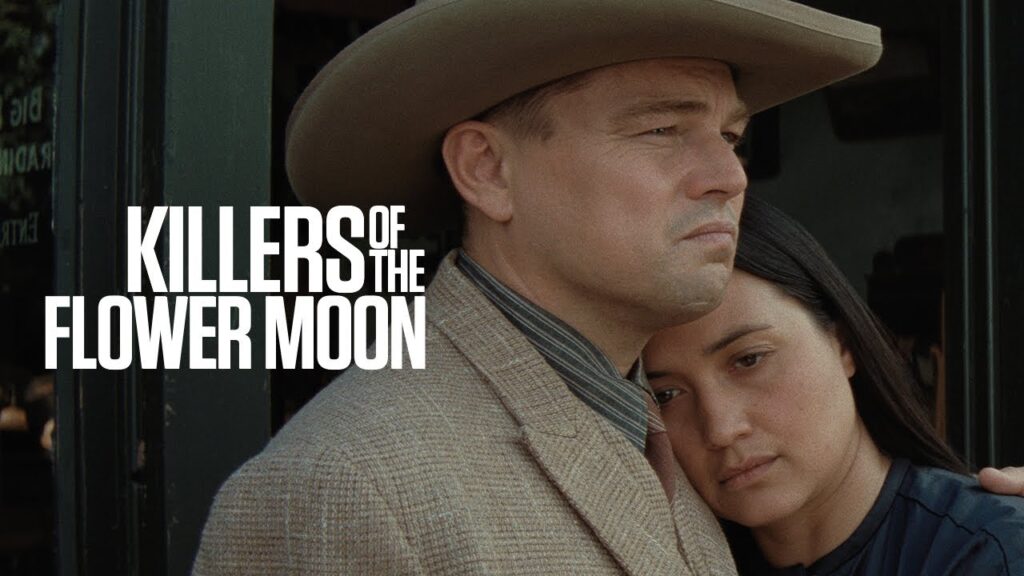Killers of the Flower Moon is a horrifying portrayal of the unprotected reality of America:In his most recent film, Martin Scorsese insists, not begs, that we see the atrocities committed against the Osage Nation by the US and gain an understanding of what it takes for Indigenous people to survive in our nation today.
Killers of the Flower Moon is a horrifying portrayal
The scope and severity of the horrific atrocities committed over many centuries by white colonial settlers and their descendants against Native Americans, such as the Osage Nation, could never be adequately captured in a film. However, filmmaker Martin Scorsese aims to shed harsh light on that horrifying piece of the US’s all-too-recent history and show how it’s very much a part of our country’s living heritage with Apple TV Plus’ highly anticipated historical crime drama Killers of the Flower Moon.
Killers of the Flower Moon is a chilling account of how the Indigenous community in Oklahoma’s Osage County was rocked by a two-decade-long string of brutal murders following the unexpected discovery of oil on their land at the turn of the 20th century. It is based on journalist David Grann’s 2017 nonfiction book of the same name. When we first encounter the Osage decades before large numbers of other people start moving to Oklahoma on their own initiative, they had experienced loss and been uprooted by the American government, much like other tribes.
However, the destiny of the whole Osage Nation changes drastically the minute a group of young Osage men discover one of the several oil resources that dot the land they officially possess. The Osage became the richest people in the nation very instantly as a result of the abrupt and persistent inflow of money. Killers of the Flower Moon describes how the Osage family’s wealth was accompanied by blatant jealousy from white outsiders who saw Native Americans as unworthy simpletons. This kind of thinking resulted in one of the most heinous and nefarious murder campaigns in American history.
The precise number of Osage people who were killed during the “Reign of Terror” as a result of schemes developed by white people to seize control of their precious oil headrights is still unclear. Though it focuses on Mollie Kyle (Lily Gladstone), one of the many Osage who were encouraged to view white ranger William King Hale (Robert De Niro) as something of a local hero and to address him by his middle name as a sign of respect, Killers of the Flower Moon nevertheless makes an effort to honor those lost lives.
Killers of the Flower Moon succeeds in showing you a small part of the Osage people and the greatness that was rightfully theirs. One example is how the film briefly highlights an astonishingly beautiful depiction of the Osage people thriving in luxury after surviving generations of abuse. However, as the film focuses on Mollie, an aloof but devoted Osage woman who feels a strong sense of duty to watch out for her sisters Minnie (Jillian Dion), Anna (Cara Jade Myers), and Rita (JaNae Collins), as well as their aging mother Lizzie Q (Tantoo Cardinal), the method by which the film attempts to humanize its characters becomes much more difficult in ways that are both commendable and highly dubious by design.
Many of the screenplay’s specifics, which were taken verbatim from Grann’s book by Scorsese and co-writer Eric Roth, serve to emphasize the greater system of economic disenfranchisement that was imposed on the newly wealthy Osage through a dubious guardianship scheme. However, Mollie is also at the core of Scorsese and Roth’s retelling of the historical record, along with Ernest Burkhart (Leonardo DiCaprio), Hale’s nephew and collaborator. Even if there is no denying the connections between their stories, Killers of the Flower Moon ultimately feels like a movie that was primarily made with white audiences in mind because of this decision.
Given how frequently Mollie and everyone around her switch to speaking Osage, as well as the film’s dedication to exposing the true extent of racism, violence, and malice inherent in the very culture of self-described “Good White PeopleTM,” it may startle non-Indigenous audiences. It’s impossible to avoid seeing Killers of the Flower Moon as a self-aware exercise in exposing viewers to the brutalization of non-White people in order to make points about its own subject matter and the act of turning these kinds of stories into “prestige” entertainment, given its emphasis on Ernest and his willingness to smile in the faces of people he later mutilates.
Killers of the Flower Moon is frequently a subtle movie, especially when it comes to how it illustrates how commonplace items like food, medicine, and drink may be turned into weapons by powerful people seeming to be concerned about the well-being of others. However, it is also an explicit film, both in the horrific violent sequences you are forced to witness and in the way Scorsese challenges you to think about the aspect of the plot that drew you in for the previous fifteen minutes or so.
In doing so, Scorsese all almost admits the work’s flaws and challenges us to consider why, for instance, people are so eager to make fun of memes from the movie or ignore critiques of it from real Osage people. Killers of the Flower Moon is neither a flawless movie, nor is it one that accurately depicts the Osage people who, despite systematic persecution, have survived throughout history. You owe it to yourself to see it, though, since it is a profoundly powerful, heartbreaking, and truly amazing work of cinema.
In addition, Jesse Plemons, John Lithgow, Brendan Fraser, Jason Isbell, William Belleau, Scott Shepherd, Everett Waller, Yancey Red Corn, and Tatanka Means feature in Killers of the Flower Moon. In cinemas today, the movie will soon be available for streaming on Apple TV Plus.

